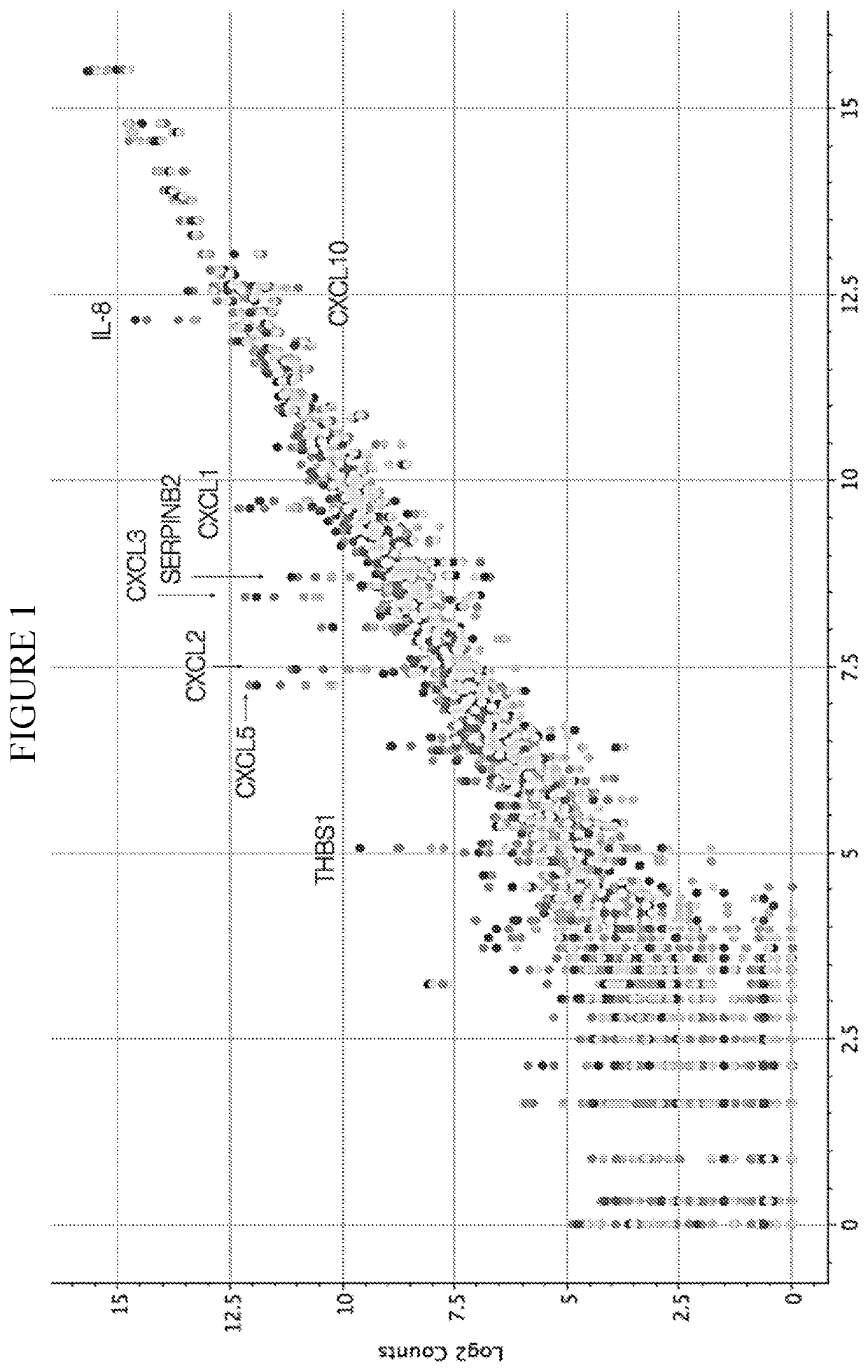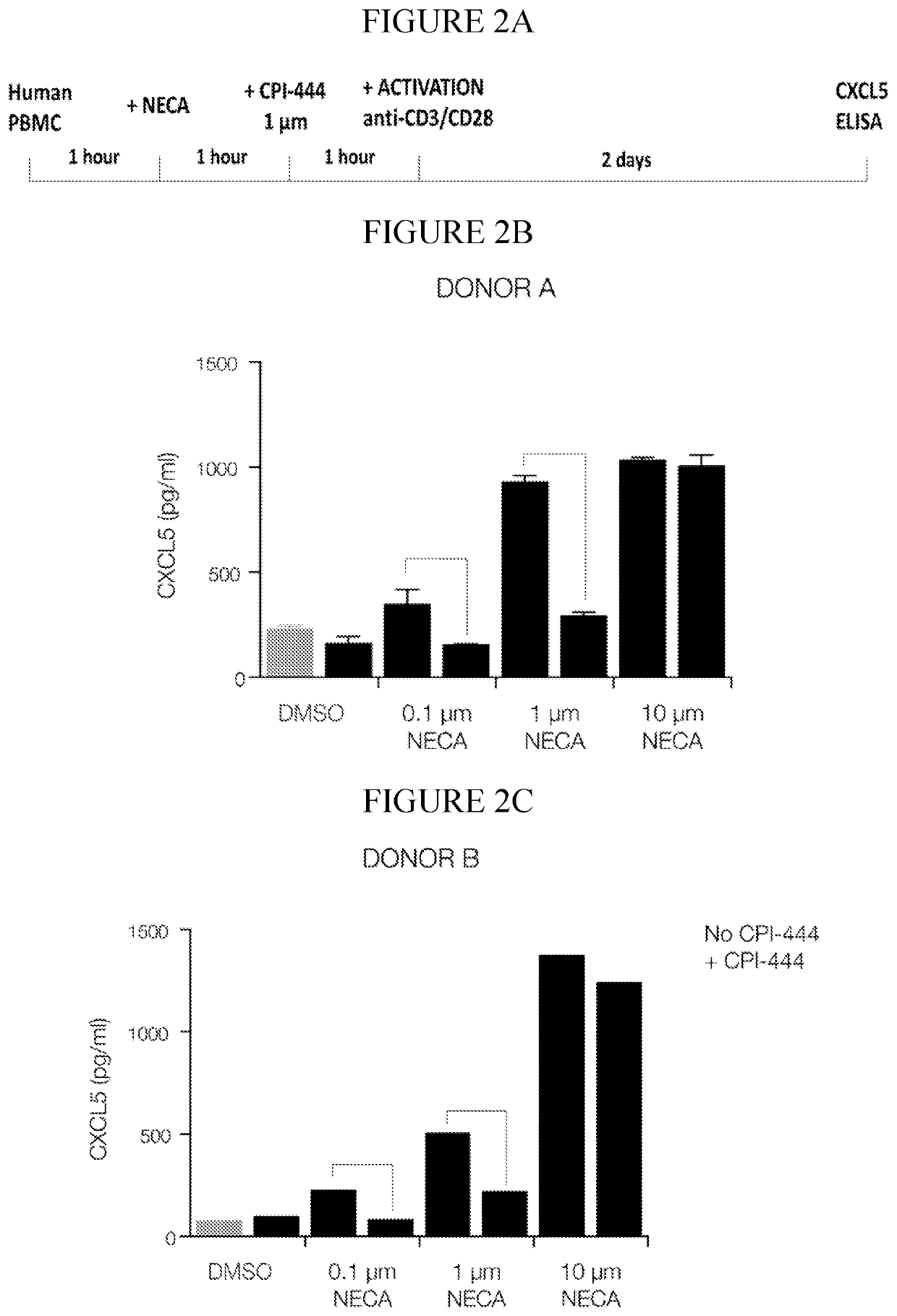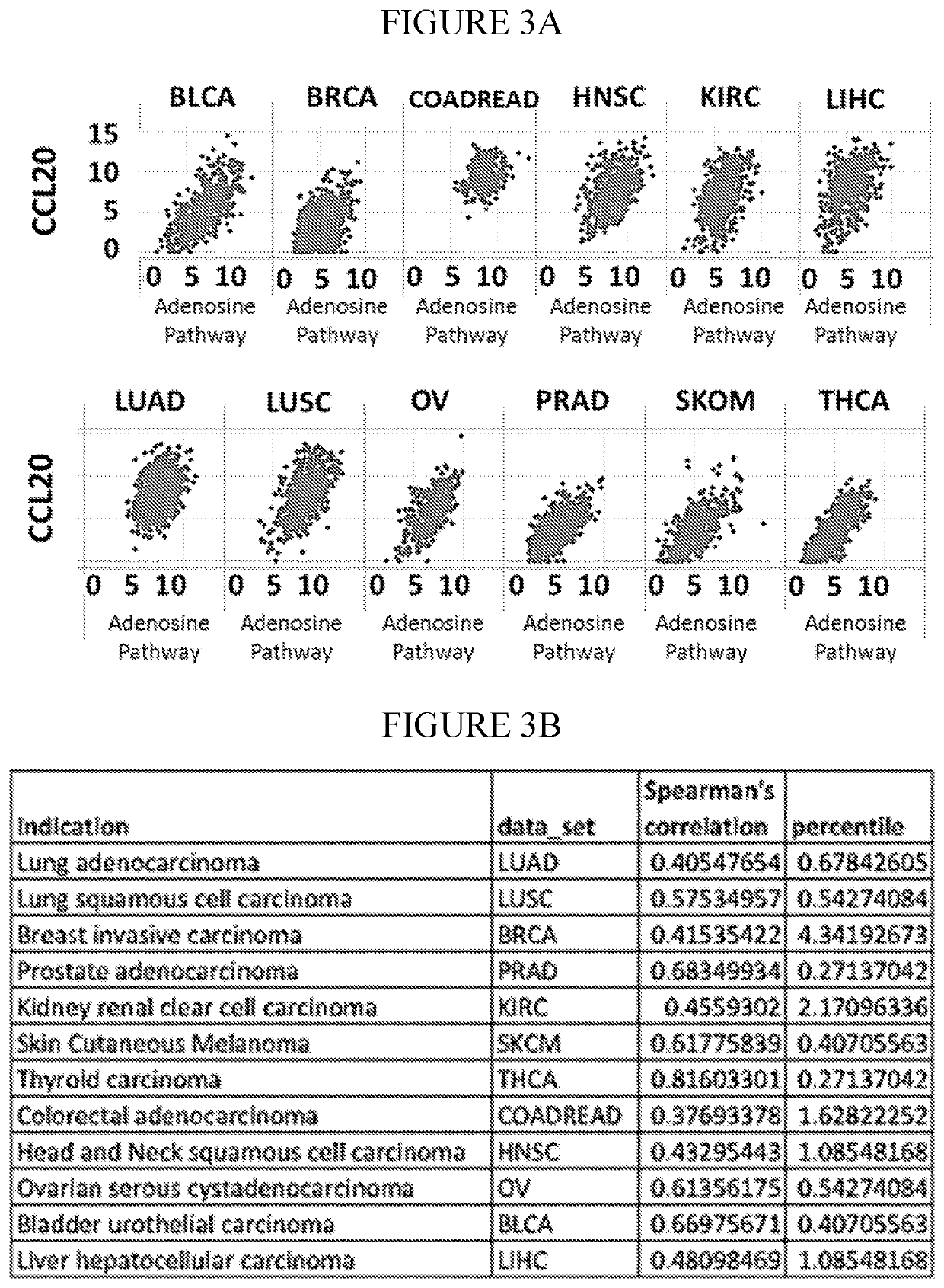Methods for detecting and treating cancers having adenosine pathway activation
a technology of adenosine pathway and adenosine activation, which is applied in the direction of peptide sources, instruments, drug compositions, etc., can solve the problem of difficult measurement of adenosine levels in tumors, and achieve the effect of increasing the expression level and increasing the expression level
- Summary
- Abstract
- Description
- Claims
- Application Information
AI Technical Summary
Benefits of technology
Problems solved by technology
Method used
Image
Examples
example 1
ession in PBMCs is Modulated by NECA
[0180]RNA purified from normal, healthy human peripheral blood mononuclear cells (PBMCs) treated with 5′-N-ethylcarboxamidoadenosine (NECA) and and activated with anti-CD3 / CD28 antibody were analyzed by NanoString hybridization-based quantification (NanoString Technologies, Inc.). FIG. 1 shows the NanoString quantification data; labeled genes are consistently modulated by NECA treatment. Each dot represents the expression level of a specific gene. Dot shade represents the concentration of NECA used and / or different PBMC donors. Genes above the diagonal axis are upregulated relative to the DMSO control. Genes below the diagonal axis are downregulated relative to the DMSO control. Table 3 provides a list of genes up- or down-regulated by 0.1 μM, 1 μM, and / or 10 μM NECA treatment (compared to vehicle-treated control), as determined by NanoString NPR1 sequencing.
TABLE 3NanoString NECA ResponselogFCAveExprtP.Valueadj.P.ValBIL23A0.46276497.33483814.7982...
example 2
nhibits NECA-Induced Cytokine Expression
[0183]NECA activation of CXCL5 protein expression was evaluated. PBMCs were harvested from two different human donors. As shown in FIG. 2A, cells were treated with NECA, followed by CPI-444, then treated with anti-CD3 / CD28 to activate the PBMCs. CPI-444 (Corvus Pharmaceuticals) is an antagonist of the adenosine A2A receptor. CXCL5 protein in the culture supernatants was evaluated by ELISA two days after activation. Data is provided in FIGS. 2B and 2C. CXCL5 expression is activated by NECA. This activation in CXCL5 can be blocked by the addition of CPI-444, a A2AR receptor antagonist that neutralizes the immunosuppressive effects of NECA. This establishes that the induction of CXCL5 is specific to signaling through adenosine receptors.
example 3
ression Correlates with Expression of a Subset of Adenosine-Regulated Genes in Multiple Tumor Types
[0184]Gene expression of CCL20 compared to expression of a subset of genes that were shown to be regulated by adenosine was determined in multiple solid tumor types, using the Cancer Genome Atlas (National Cancer Institute, National Human Genome Research Institute; found on at cancergenome.nih.gov) Genomic Data Commons Data Portal. Level of expression for the adenosine pathway was calculated in each tumor type as the mean of Log 2 of the expression of genes shown to be induced by adenosine (CXCL1, CXCL2, CXCL3, CXCL5, SERPINB2, IL8, and IL1B). Gene expression of CCL20 and expression of this subset of genes are highly correlated in solid tumors (FIGS. 3A and 3B), indicating that CCL20 (and co-regulated genes) may be used as a surrogate for expression of this subset of genes. For all tumor types, p<0.0001. For all tumor types, this group of genes is in top 5% of all gene correlations wit...
PUM
| Property | Measurement | Unit |
|---|---|---|
| nanopore sequencing | aaaaa | aaaaa |
Abstract
Description
Claims
Application Information
 Login to View More
Login to View More - R&D
- Intellectual Property
- Life Sciences
- Materials
- Tech Scout
- Unparalleled Data Quality
- Higher Quality Content
- 60% Fewer Hallucinations
Browse by: Latest US Patents, China's latest patents, Technical Efficacy Thesaurus, Application Domain, Technology Topic, Popular Technical Reports.
© 2025 PatSnap. All rights reserved.Legal|Privacy policy|Modern Slavery Act Transparency Statement|Sitemap|About US| Contact US: help@patsnap.com



